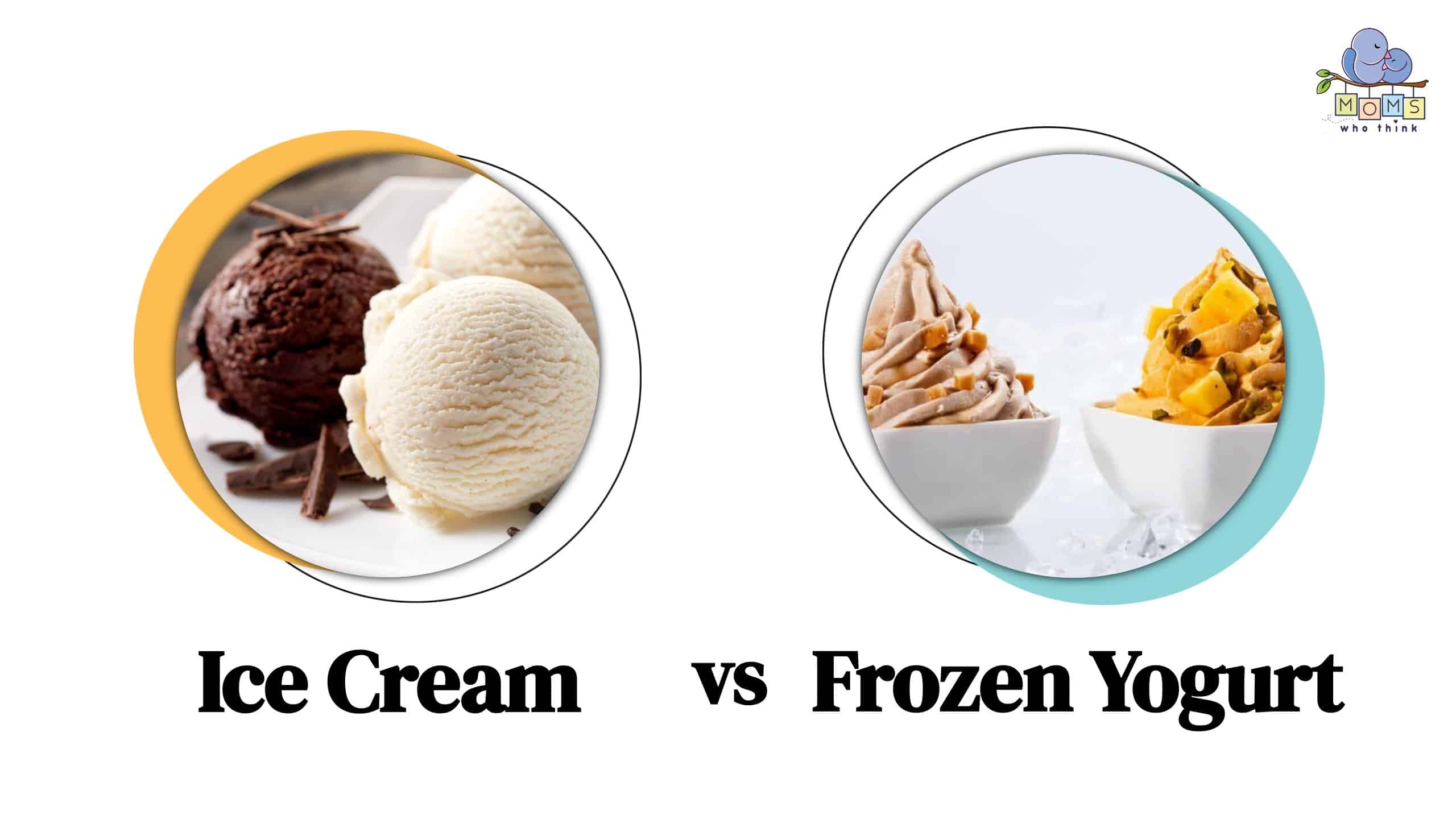Frozen yogurt vs ice cream – which is healthier? This debate has gone on long enough, and everyone seems to have a distinctive opinion. It’s time to set the record straight. In this post, we’ll closely examine frozen yogurt vs ice cream and their nutritional values, ingredients, and health advantages, among others.
Frozen Yogurt vs Ice Cream: What's the Difference?
The main difference between ice cream and frozen yogurt is that ice cream is primarily made from milk or cream while frozen yogurt is made from yogurt. This difference of ingredients leads to frozen yogurt tasting more tangy while ice cream is more creamy and rich.
Another key difference arising from ice cream and frozen yogurt's ingredients is their nutrition. Ice cream is higher in fat and calories while frozen yogurt is generally low in calories, but sometimes has more added sugar to reduce the tangy flavor found in yogurt. There are also added health benefits from frozen yogurt not found in ice cream, like probiotics.
Let's explore these differences in more detail.
Texture
The biggest distinction between frozen yogurt and ice cream is its texture. Ice cream has a far denser consistency than frozen yogurt because of its distinguished fat content. This makes it smoother, richer, and more decadent. Frozen yogurt alternatively tends to be lighter and fluffier, with a barely tart flavor.

©Matthew Ennis/Shutterstock.com
Flavors
Frozen yogurt usually comes in fruity flavors like strawberry, raspberry, and blueberry. Ice cream has a wider variety of flavors, including chocolate, vanilla, mint chip, and cookies & cream.
Health Benefits
Although frozen yogurt and ice cream contain significant levels of sugar, frozen yogurt is commonly considered healthier than ice cream. This is because frozen yogurt normally has fewer calories and fat content for each serving than ice cream. In addition, it includes probiotics which help with digestion and gut health.
Calories and Fat Content
Frozen yogurt often has fewer calories per serving than ice cream. This is because ice cream uses heavy cream and eggs, which include a significantly higher quantity of fats than dairy products such as skimmed milk. The average serving of frozen yogurt consists of about 110-140 calories, while the same size scoop of regular ice cream contains up to 250 calories. We'll have more details about which is healthier below.
What Is Frozen Yogurt?
Frozen yogurt is a refreshing and tasty option that may pass as traditional ice cream. It's a delicious treat that gives the identical creamy, indulgent flavor of ice cream with one crucial difference – it is made with wholesome yogurt elements in preference to cream.
Frozen yogurt is a dairy product made from yogurt, sugar, and different flavoring components. It is commonly processed in an ice cream maker for a smooth, creamy-textured result.
Unlike traditional ice cream made from dairy fat, frozen yogurt has drastically less fat and calories; but still presents all of the identical delicious flavors. This makes frozen yogurt an excellent option for those in search of a healthier dessert.
Health Benefits
Frozen yogurt gives several health benefits compared to traditional ice cream. It often contains less fat, sugar, and energy than most ice cream varieties. Furthermore, it incorporates beneficial probiotic microorganisms that enhance digestion and the immune system.
Moreover, frozen yogurt often has greater fiber than traditional ice cream and excessive tiers of calcium and other nutrients.
Flavors
Frozen yogurt comes in many flavors and can be custom designed to fit anyone's tastes. Popular flavors encompass chocolate, vanilla, strawberry, blueberry, and pistachio. Furthermore, numerous types comprise additional substances, along with nuts, fruits, and sweet portions.
Serving Suggestions
Frozen yogurt is best served cold and can be enjoyed in several methods. It may be eaten as a frozen treat or used to make smoothies, ice cream sundaes, or parfaits. It could also be served with waffles and pancakes for a unique breakfast treat.
What Is Ice Cream?
The concept of frozen desserts has been around since ancient times. Historical records in China show that the primary ice cream-like treat was produced from snow and milk, flavored with fruits.

©SunKids/Shutterstock.com
In Italy, ice cream became a famous dessert amongst the nobility throughout the 16th century. The modern-day model of ice cream, as we understand it nowadays, originated in France and England all through the 18th century.
Ingredients
Ice cream usually consists of milk, sugar, and stabilizers like guar gum and xanthan gum. The cream is typically delivered as well to present it with a richer texture.
Flavoring ingredients such as cocoa, vanilla extract, or fruit puree may be blended into the bottom properly.
Types
There are several ice creams today. Traditional ice cream is made from natural ingredients and is full of taste! Ato is an Italian-fashion frozen dessert with a creamy, dense texture and bitter flavors.
Sorbet contains no dairy products and is usually flavored with fruit purees or juices for a mild and refreshing treat. Gelato has a similar texture to ice cream but is made with more milk and less cream, giving it a milder taste.
Serving Suggestions
Ice cream may be loved as-is or used in lots of recipes. Try adding scoops to warm fudge sundaes or cookie dough bites. Ice cream additionally pairs perfectly with sparkling fruit like strawberries or blueberries. Or, why not try to use ice cream as a base for milkshakes and smoothies?
Health Considerations
Ice cream is high in calories and saturated fats, so it’s crucial to enjoy it moderately. To make it a touch healthier, choose low-fat or non-dairy alternatives.
Which is Healthier: Ice Cream or Frozen Yogurt (Fat, Calories, Sugar)
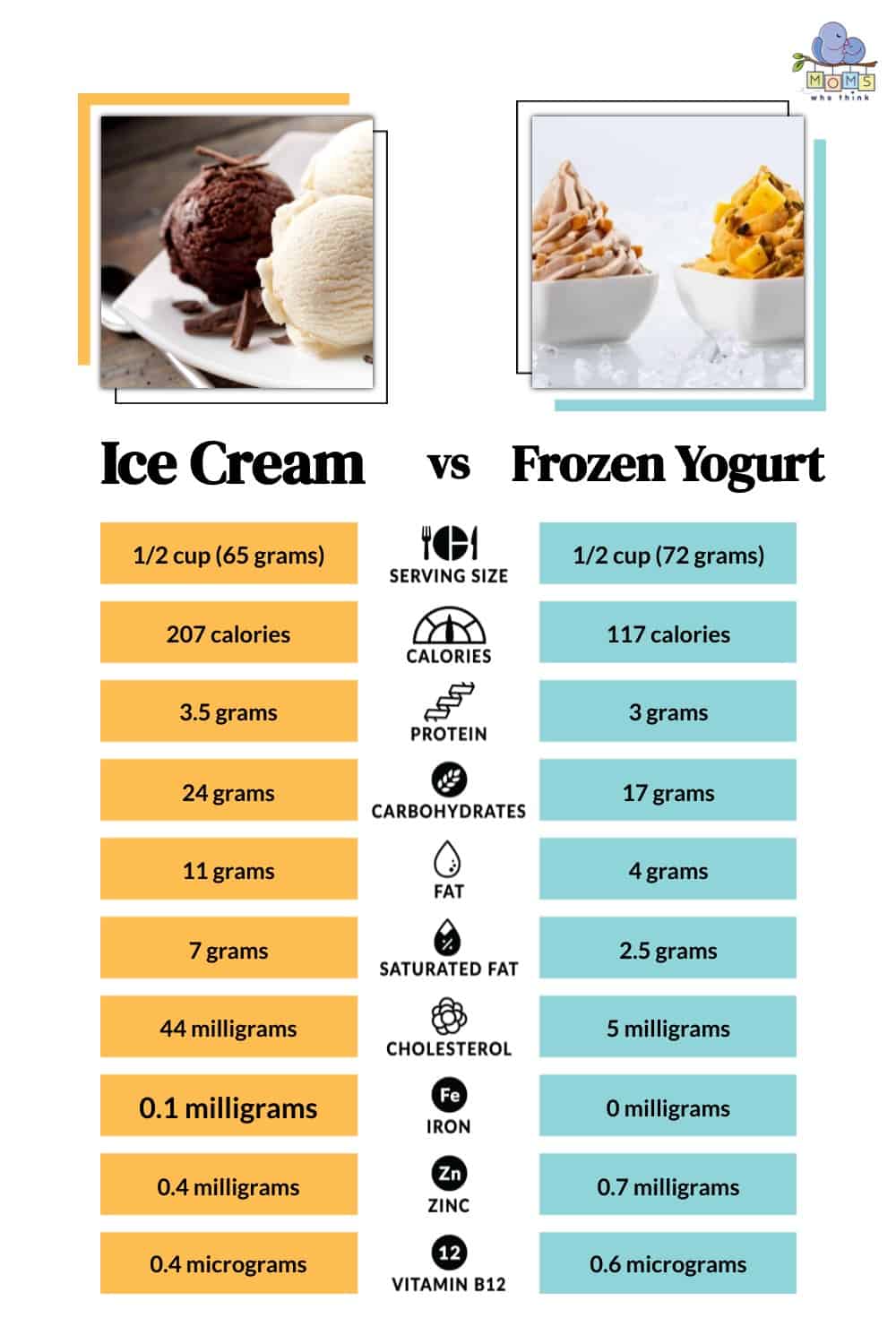
Frozen yogurt is healthier than ice cream thanks to its lower calories and cholesterol. Ice cream has roughly twice the calories and three times the fat of frozen yogurt. A half cup of ice cream has 207 calories and 11 grams of fat while frozen yogurt has 117 calories and 4 grams of fat. The differences in cholesterol are even more dramatic with ice cream having 44 milligrams compared to frozen yogurt's 5 milligrams.
It's important to note that the brands of ice cream and frozen yogurt can impact their nutrition. For example, some frozen yogurts add more sugar to reduce the natural tartness of yogurt. Ice creams also come with a lot of additions that can add significant calories. A carton of Ben & Jerry's with added fudge ripples and caramel will pack on more calories while frozen yogurt is often sold at places where toppings with more sugar and calories are added.
Can You Substitute Frozen Yogurt For Ice Cream?
The answer is yes. While there are variations between the two, it’s viable to enjoy some delicious treats made with frozen yogurt rather than ice cream.
Texture
The most obvious difference between frozen yogurt and ice cream is the texture. Ice cream is way creamier than frozen yogurt, which has a milder consistency. If you’re looking for a suitable option that mimics the feel of conventional ice cream, look no further than frozen yogurt. With its smooth and velvety texture, it’s best for making sundaes, milkshakes, or other ice cream suggestions.
Nutrition
Frozen yogurt generally decreases in fat and energy than ice cream because it consists of less cream and sugar. It also incorporates useful probiotics, which help promote a healthy gut. Frozen yogurt is a brilliant option if you’re searching for an indulgent, yet healthy option.
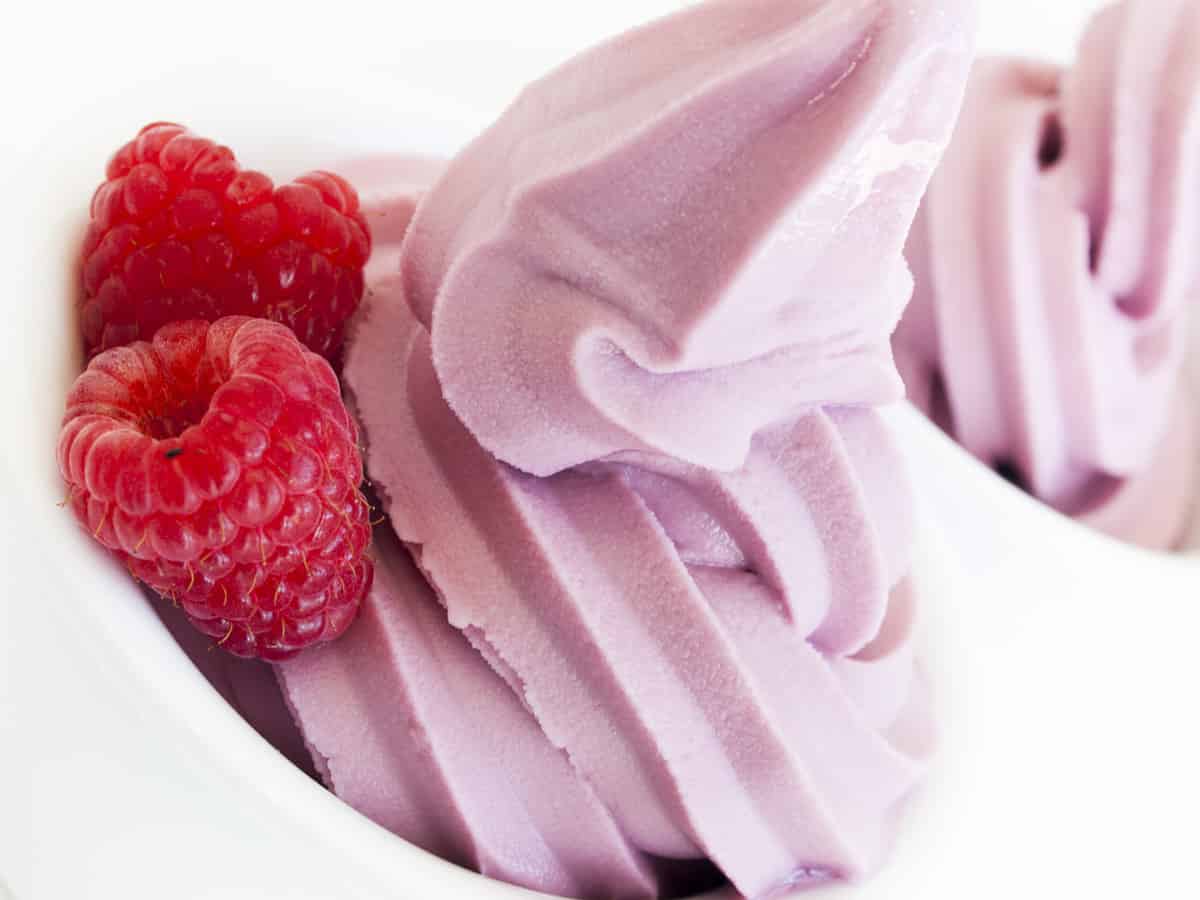
©Arina P Habich/Shutterstock.com
Flavor
The taste of ice cream and frozen yogurt can also differ significantly. While each may be made with numerous flavors and mix-ins, frozen yogurt normally has a milder flavor than ice cream. This makes it the perfect choice for folks that don’t like overly sugary snacks.
Are Frozen Yogurt and Ice Cream The Same Thing?
First, let's start off by using looking at the ingredients. While each frozen yogurt and ice cream includes dairy products, mainly milk and cream, there are some key differences between them.
Ice cream generally consists of more fats than frozen yogurt and frequently relies on egg yolks or cream to offer a richer texture. Alternatively, frozen yogurt normally incorporates less fat than ice cream and is made with a mixture of milk, yogurt, and, every so often, sugar.
Another way these two treats differ is in terms of health benefits. While both may be part of a healthy regimen when eaten moderately, frozen yogurt typically contains fewer calories and fats than ice cream. It also contains probiotics which are beneficial microorganisms that are helpful for digestion and good intestinal health.
When it comes to taste, ice cream is normally perceived as richer and creamier than frozen yogurt. This is because of the better fat content in most ice creams and the addition of egg yolks or cream, which provide a thicker texture. Frozen yogurt, then again, is usually lighter and extra tart in assessment.
In terms of production method, ice cream is churned to produce an easy and creamy texture, even as frozen yogurt is virtually blended until it is creamy but mild.
Finally, the way these two treats are served additionally differs. Ice cream is typically scooped onto a cone or right into a cup, while frozen yogurt is normally done with a variety of toppings consisting of sparkling fruits, nuts, and chocolate chips.
It’s simply a matter of personal preference when deciding between frozen yogurt and ice cream. Whether you choose a rich and creamy texture or something lighter and more refreshing, both treats have their specific enchantment.
What are Substitutes For Frozen Yogurt?
Frozen yogurt is a light and healthy option compared to ice cream which has become quite popular over the years. This is because of its delicious flavor and lower calorie content, making it the special deal for those searching for a frozen, guilt-free snack on a hot day.
But what if you don’t have access to frozen yogurt? Fortunately, several substitutes for frozen yogurt can offer a comparable flavor and texture:
1. Gelato: Gelato is an Italian-style ice cream made with milk, sugar, and flavoring substances. While it normally has extra fats than frozen yogurt, it has a richer flavor and creamier texture that many prefer.
2. Greek Frozen Yogurt: This sort of frozen yogurt has a tangier taste than conventional varieties and is made with an aggregate of milk, cream, and yogurt cultures. It normally carries more protein than normal frozen yogurt, making it a fantastic snack for folks who want an additional calorie improvement.
3. Soft Serve Ice Cream: This popular dessert is usually made with a mixture of cream and milk and several synthetic or herbal flavorings. It generally contains fewer calories than regular ice cream, making it a splendid opportunity for those seeking to indulge without guilt.
4. Sherbet: Sherbet is a mild, fruity dessert made with fruit juice, sugar, and ordinary ice cream. It’s commonly favored for its less fat content than ice cream or frozen yogurt and may be an especially delicious treat while served with sparkling fruit.
5. Sorbet: This classic Italian-style frozen dessert is normally made with puréed fruit, sugar, and water. It has a mild and refreshing flavor that makes it a splendid preference for those who need something sweet without the extra fats or calories.
What are Substitutes For Ice Cream?
Ice cream is a popular frozen deal enjoyed around the world. However, what happens if you don't have any available or seek something extraordinary? Fortunately, many delicious substitutes for ice cream could fulfill your sweet tooth. From creamy sherbet and sorbet to rich frozen yogurt and smoothies, there’s something for all of us to indulge in.
Frozen Yogurt
Frozen yogurt is a creamy, healthy alternative to ice cream and can be made with dairy or non-dairy options such as coconut or almond milk. It's also low in fats, making it an excellent choice for the ones keen on their calorie consumption.
Frozen yogurt has many flavors, from classic vanilla and chocolate to more adventurous varieties such as green tea or mango. Toppings can also be delivered to frozen yogurt for added flavor and crunch.
Sherbet
Sherbet is much like ice cream, however, with a decreased fat content, and it’s normally made with fruit juice or pureed fruits. It also has a lighter texture than ice cream, making it perfect for a creamy summer dessert. Sherbet is available in many flavors, including raspberry, orange, and lemon, and may be enjoyed or topped with clean fruit or nuts.
Sorbet
Sorbet is an icy, fruit-based dessert. This is just like sherbet but made without dairy or eggs. It’s generally made with fresh fruit puree and sugar, making it a notable alternative for individuals who are lactose intolerant or vegan. Sorbet can be loved undeniably, crowned with a clean result or nuts, or maybe combined into smoothies.
Smoothies
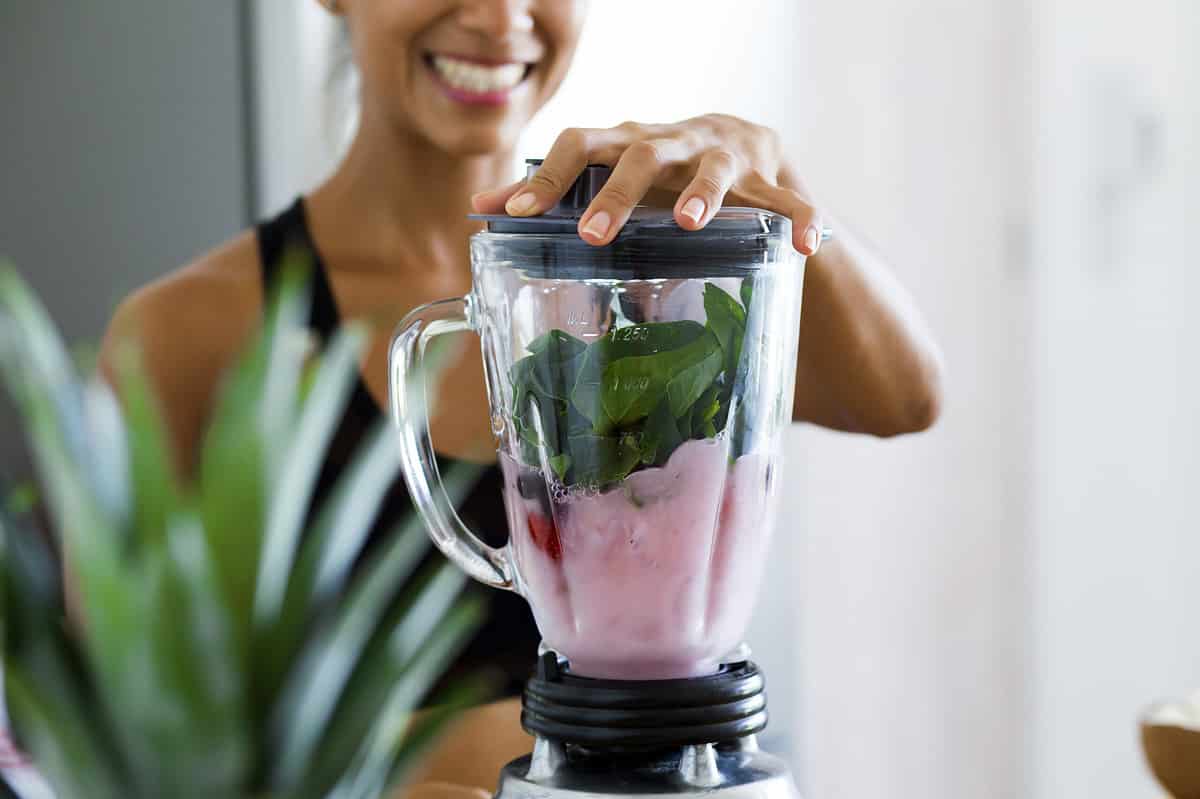
©Luna Vandoorne/Shutterstock.com
Smoothies are a great way to cool off on a hot summer day and can be made with dairy or non-dairy alternatives. They are typically made from fresh produce and greens and can be blended with yogurt, nut butter, oats, or maybe ice cream for an extra indulgent deal. Smoothies are a remarkable way to get your daily dose of fruits and greens, and they make a delicious alternative to ice cream.
Fruit Ice Pops
Fruit ice pops are a classic summertime favorite and may be made with fruit or juice. Mix your preferred ingredients, pour the combination into molds, and freeze for hours. The resulting ice pops are a fresh and healthy treat that can be savored by adults and kids alike.
How To Make Frozen Yogurt At Home
Making frozen yogurt at home is remarkably smooth and delicious. With only a few components and minimum effort, you may revel in your homemade frozen yogurt in no time.
Step 1: Gather the ingredients – You will need plain, full-fat yogurt, sugar, or a sweetener of your choice (honey works well) and any fruits or flavors you would love to feature for the introduced taste. It would be best if you also freeze the mixture.
Step 2: Combine the ingredients – Combine the yogurt, sugar or sweetener, and any fruits or flavorings you've chosen in a blender. Blend until the mixture is smooth and creamy.
Step 3: Churn the blended mixture in an ice cream maker – Transfer the mixed combination to your ice cream maker and turn it on. Allow it to churn for approximately 20 mins or until the end result is thick and creamy.
Step 4: Freeze the yogurt – Transfer the churned combination to a freezer-safe bottle or container and freeze for about 4 hours or overnight for excellent results.
Step 5: Serve it up! Scoop out your homemade frozen yogurt and indulge in it unapologetically. Add some more fruits or nuts as a garnish if you like.

©JAYMMEE RECIO/Shutterstock.com
How To Make Ice Cream At Home
Here are a few guidelines on how to make creamy and delicious ice cream at home.
1. Choose Your Recipe: The first step to making homemade ice cream is to determine a recipe. You can pick out traditional flavors like vanilla or chocolate, get innovative, and strive for something new. You’ll want some simple components with milk, cream, sugar, and flavorings. Once you’ve settled on a recipe, gather all the essential ingredients.
2. Prepare the Base: The base of your ice cream will determine its texture and taste. For the creamiest effect, try using whole milk and heavy cream. Heat these two elements in a saucepan over medium heat until it’s warm enough to contain sugar, which facilitates thickening the mixture and gives it a creamy texture. After adding the sugar, get the mixture to a gentle boil, stirring constantly.
3. Cool It Down: Once the bottom has thickened and is warm enough to dissolve the sugar, remove it from heat and allow it to cool down completely before making your ice cream. To speed up the process, transfer the combination to a metal bowl and refrigerate it until it is completely cooled.
4. Add flavors of your choice: Once the bottom has cooled, you could add flavors of your choosing consisting of vanilla extract or cocoa powder. You can also incorporate pieces of fruit, nuts, chocolate chips, and different ingredients for extra texture and taste.
5. Churn It: Once the bottom and flavorings are ready, it’s time to churn them into ice cream. You can use an electric-powered or hand-held ice cream maker for this step. Fill the ice cream maker with the combination, turn it on, and allow it to run till the ice cream is thick and creamy.
6. Freeze It: Once the ice cream has completed churning, it will be frozen. Transfer the ice cream to a wide container and let it sit in the freezer for at least four hours to 24 hours (a single day) until it’s ready to scoop!
A Quick Comparison of Frozen Yogurt vs. Ice Cream
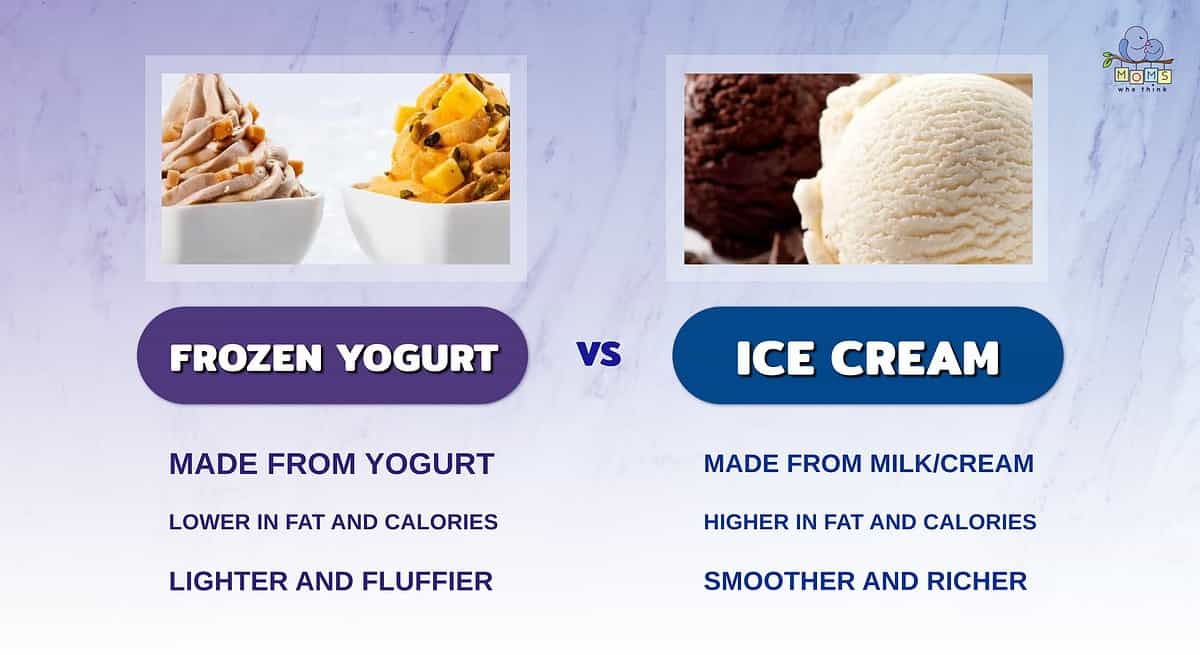
When it's hot outside, you want nothing more than to cool off. With the aid of either one of these delicious treats, accomplishing that will take no time at all. Frozen yogurt has fewer calories and less fat than ice cream, but sometimes has more sugar. Ice cream is famous for its smooth and rich taste, while frozen yogurt is lighter and fluffier. Whichever one you pick, you're sure to find lots of delight!
If you want to try out a really unique recipe, try out this ice cream pumpkin pie:
PrintIce Cream Pumpkin Pie
- Total Time: 1 hour 5 minutes
Ingredients
- 1 package (9 ounces) prepared graham cracker pie crust
- 1 pint vanilla ice cream softened
- 1 can (16 ounces) pumpkin
- 1 cup whipped cream
- ¾ cup sugar
- 2 teaspoons pumpkin pie spice
- ½ teaspoon salt
Instructions
- Fill pie crust with ice cream; freeze until solid.
- In medium bowl, combine pumpkin, whipped cream, sugar, pumpkin pie spice and salt.
- Spoon mixture over frozen layer of ice cream in crust; freeze until solid.
- To serve, remove pie from freezer and place in refrigerator one hour before serving. Slice and serve with additional whipped cream, if desired.
